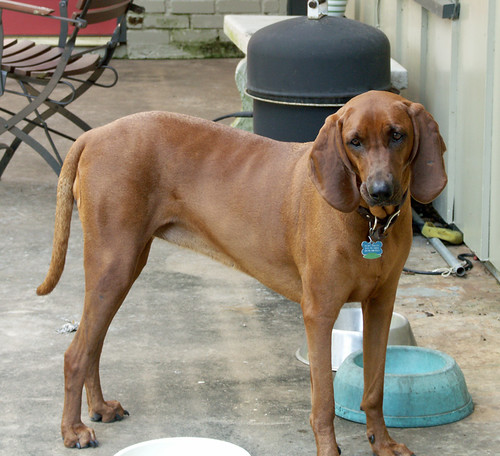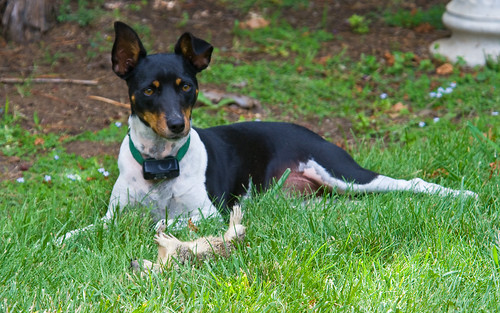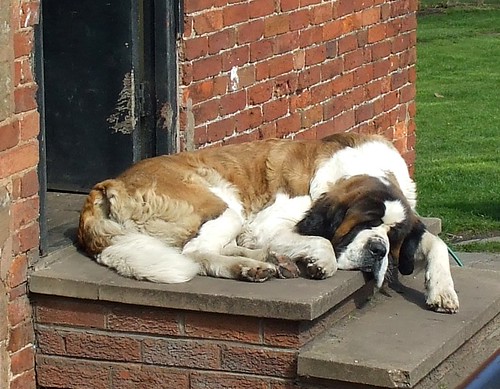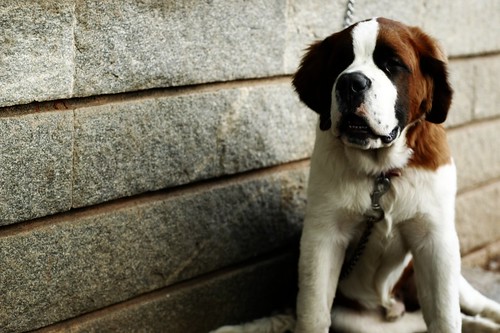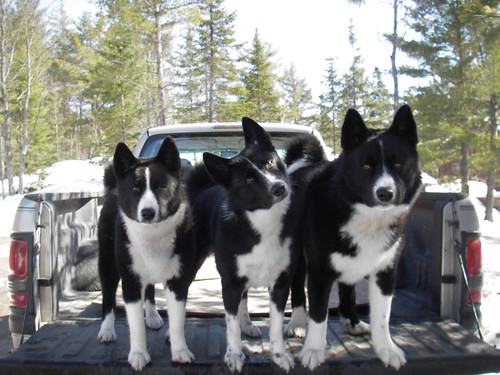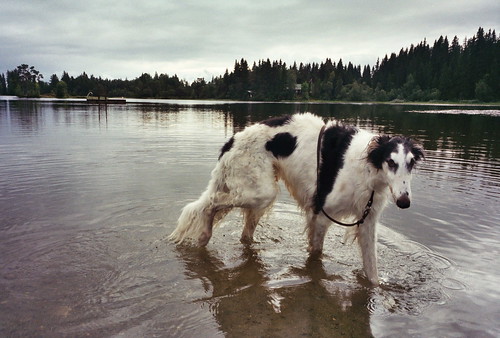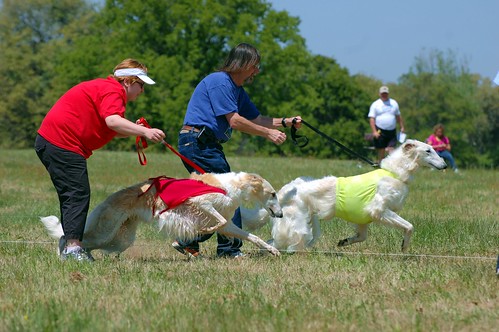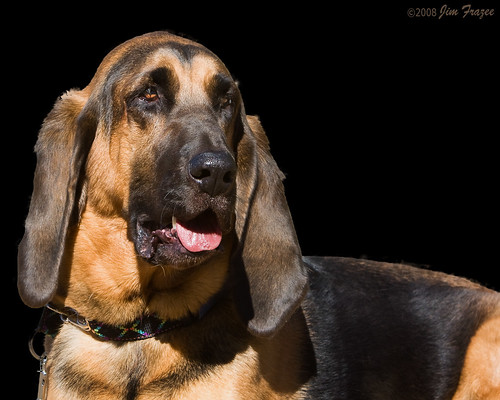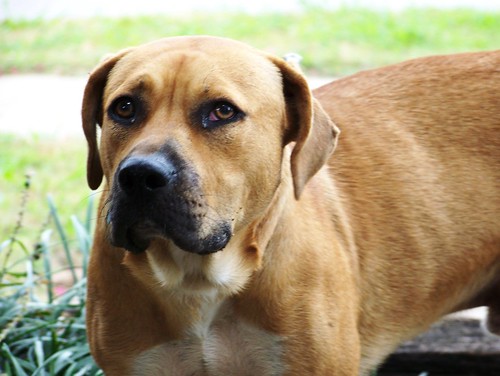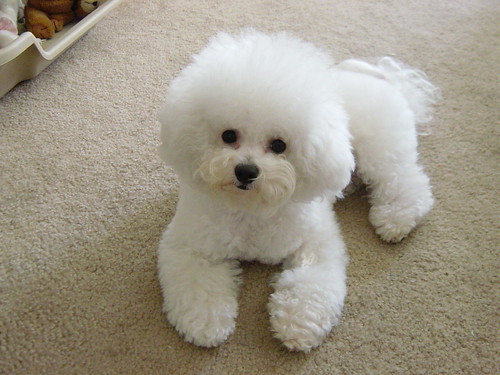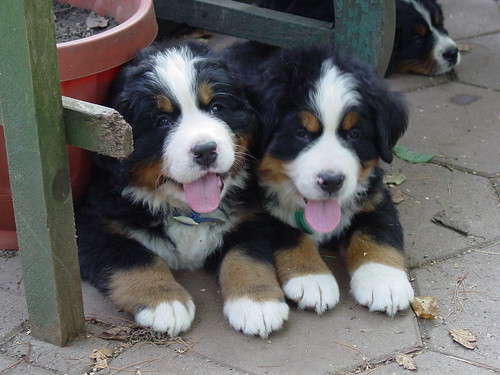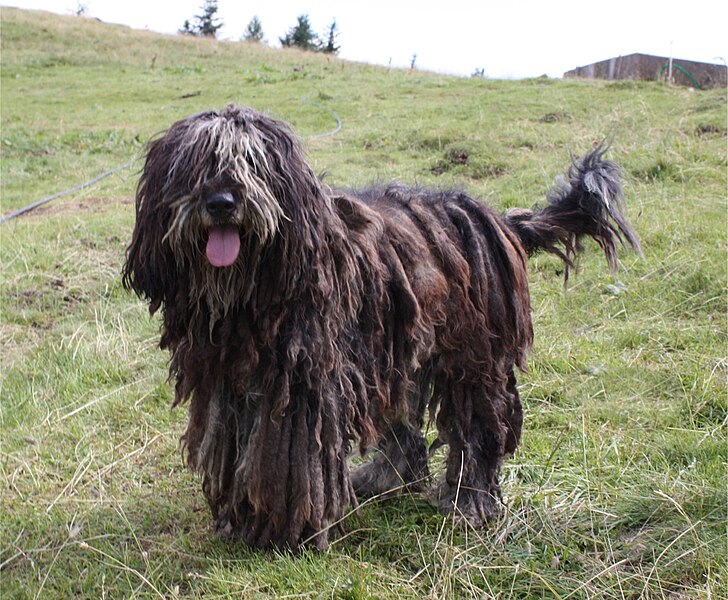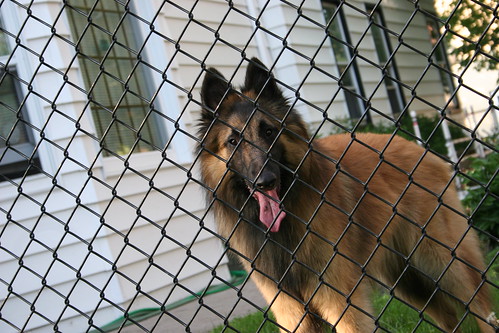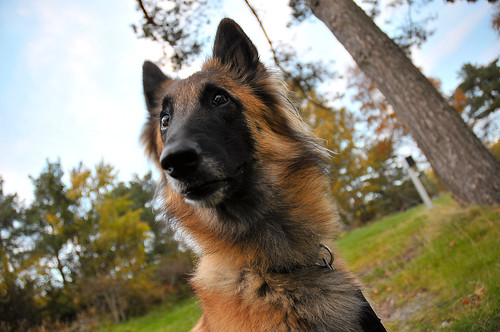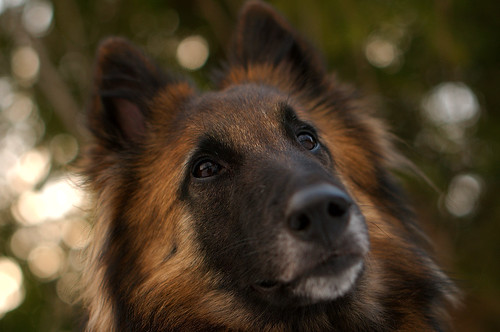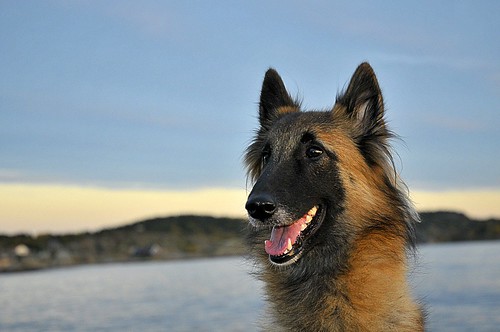The
Komondor (Hungarian plural komondorok) is a large white colored Hungarian breed of livestock guardian dog with a long, corded coat. The Komondor is an old-established powerful dog breed which has a natural guardian instinct to guard livestock and other property. The Komondor was mentioned for the first time in 1544 in a Hungarian codex. The Komondor breed has been declared one of Hungary’s national treasures, to be preserved and protected from modification.
The Puli is another Hungarian sheep dog about half the size of the Komondor, and usually black in color.
The Komondor is a large dog (many are over 30 inches tall), making this one of the largest common breeds of dog, or a molosser. The body is covered by a heavy, matted, corded coat. The dogs have robust bodies, strongly muscled, with long legs and a short back, with the tails carried low. The body, seen sideways, forms a prone rectangle. The length of body is slightly longer than the height at the withers, approximately 104% of the height at withers.
The Komondor has a broad head with the muzzle slightly shorter than half of the length of the head, with an even and complete scissor bite. Nose and lips are always black. People unfamiliar with the breed are often surprised by how quick and agile the dogs are. The Komondor's appearance is dignified and commands respect.
The minimum height of female Komondors is 25.5 inches (65 cm) at the withers, with an average height of 27.5 inches (70 cm). The minimum height of male Komondors is 27.5 inches (70 cm) with an average height of 31.5 inches (80 cm). No upper height limit is given. Komondor females on average weigh between 88–110 lb (40–50 kg) and Komondor males weigh on average between 110–132 lb (50–60 kg).
The Komondor's coat is a long, thick, strikingly corded white coat, about 20 – 27 cm long (the heaviest amount of fur in the canine world), which resembles dreadlocks or a mop. The puppy coat is soft and fluffy. However, the coat is wavy and tends to curl as the puppy matures.
A fully mature coat is formed naturally from the soft undercoat and the coarser outer coat combining to form tassels, or cords and will take around two years to form. Some help is needed in separating the cords so the dog does not turn into one large matted mess.
The length of the cords increases with time as the coat grows. Shedding is very minimal with this breed, contrary to what one might think (once cords are fully formed). The only substantial shedding occurs as a puppy before the dreadlocks fully form. The Komondor is born with only a white coat, unlike the similar-looking Puli, which can be white, black, or sometimes grayish.
However, a working Komondor's coat may be discolored by the elements, and may appear off-white if not washed regularly. Traditionally the coat protected the Komondor from wolves' bites, as the bites were not able to penetrate the thick coat. The coat of the Komondor takes about two and a half days to dry after a bath.

